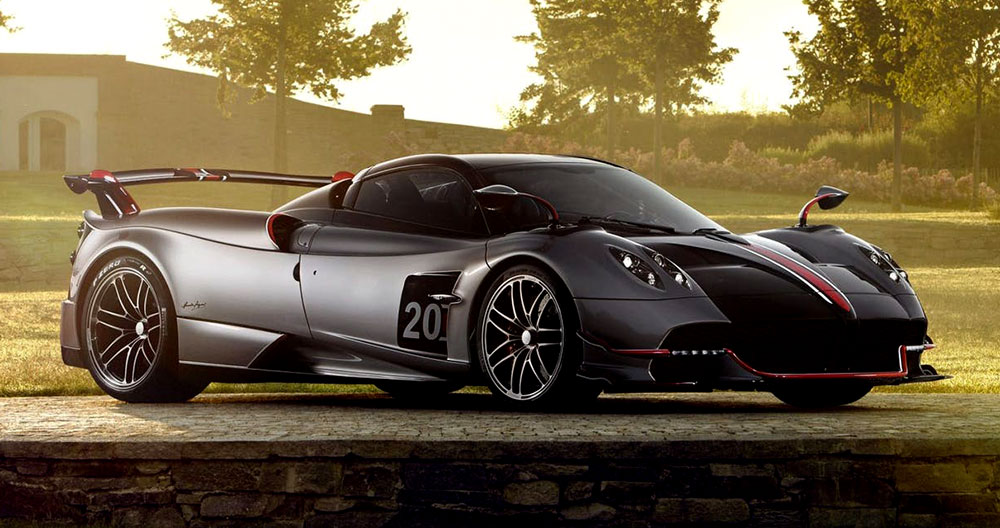The quickest and most powerful Pagani.
The Huayra BC is a track-ready variant of the Huayra that was unveiled at the 2016 Geneva Motor Show. It is named after Benny Caiola, a long-time friend of Horacio Pagani and the first customer to buy a Pagani car. Only 20 units were produced, with each priced at US$2.6 million.
The Huayra BC also comes with a lighter titanium exhaust system, new aluminum allow wheels, and a more minimalistic interior. Tires used are Pirelli P Zero Corsa tires with 12 different rubber compounds. Avional, a type of aeronautical grade aluminum, is used in the suspension and wishbones in the Huayra BC.

In addition, the Huayra BC sports various exterior changes. The front bumper has been redesigned with a front splitter and winglets, the sides now feature deeper side skirts, and the rear is comprised of an air diffuser as wide as the entire rear bumper and a large fixed rear wing. These exterior components are used for downforce and drag optimization.
The Huayra BC is powered by an M158 codenamed twin-turbocharged V12 engine from the Huayra that was upgraded to produce 740 hp (552 kW) at 6200 rpm and 737 ft·lb (1000 N·m) of torque between 4000 and 6500 rpm, although its specifications differ from the real life model. Similar to the Huayra, it uses a seven-speed Xtrac sequential manual transmission with a single clutch that shifts slightly slower than a dual-clutch transmission, but weighs significantly less.
Weight was reduced to 2685 lb (1218 kg), owing to the use of a new material named “carbon triax” that claimed to be 50% lighter and 20% stronger than normal carbon fiber, resulting in a power-to-weight ratio of 607.6 hp (453 kW) per tonne.
The Huayra BC is capable of 0 to 60 mph (97 km/h) in 2.8 seconds, 0 to 100 mph (161 km/h) in 5.6 seconds, and a top speed of 238 mph (383 km/h). In Forza Motorsport 7, these performance stats were reduced to 3.25 seconds, 5.75 seconds, and 231 mph (372 km/h), respectively.
Share this:
- Click to share on Facebook (Opens in new window)
- Click to share on Twitter (Opens in new window)
- Click to print (Opens in new window)
- Click to share on LinkedIn (Opens in new window)
- Click to share on Reddit (Opens in new window)
- Click to share on Tumblr (Opens in new window)
- Click to share on Pinterest (Opens in new window)
- Click to share on Pocket (Opens in new window)
- Click to share on Telegram (Opens in new window)
- Click to share on WhatsApp (Opens in new window)




